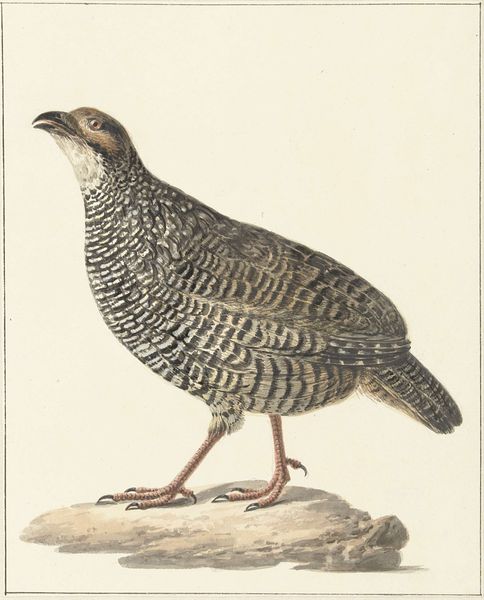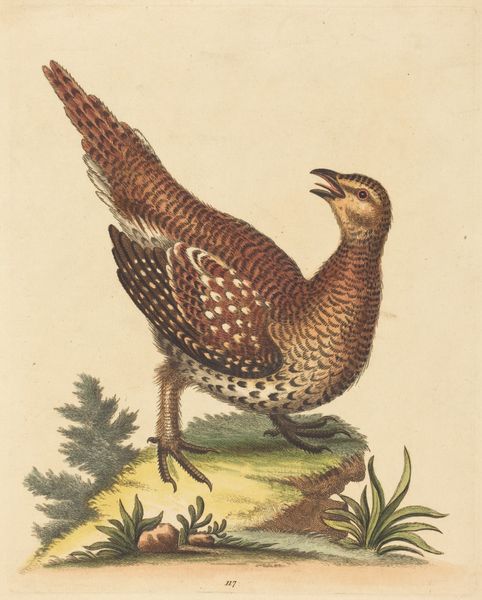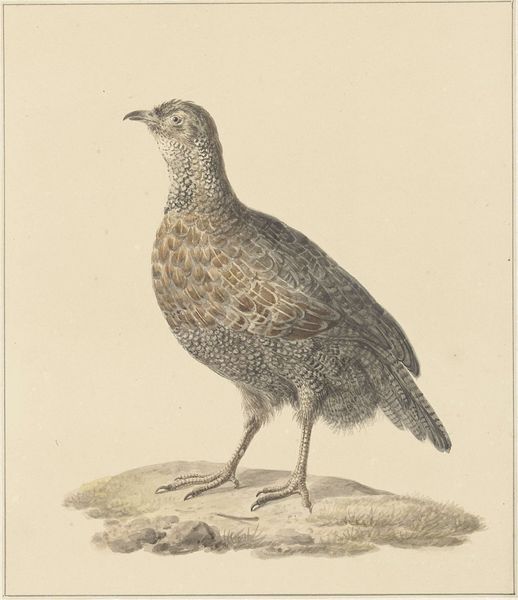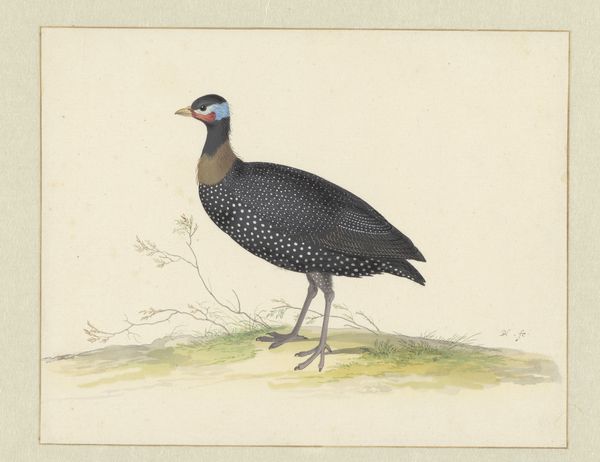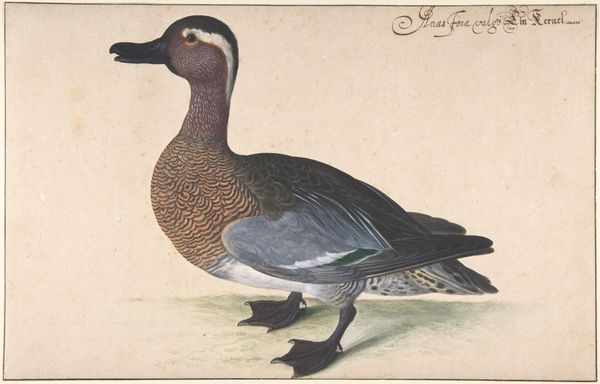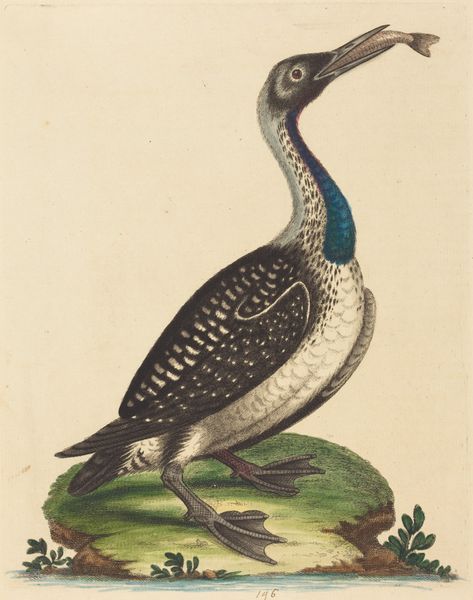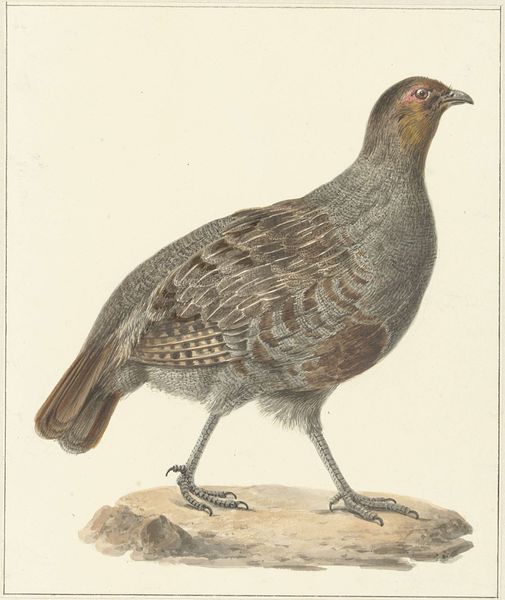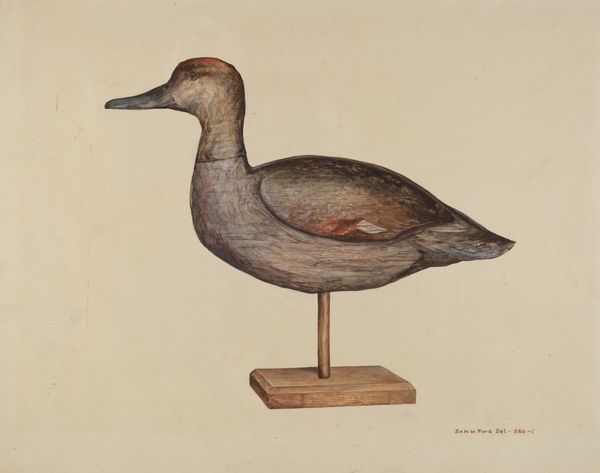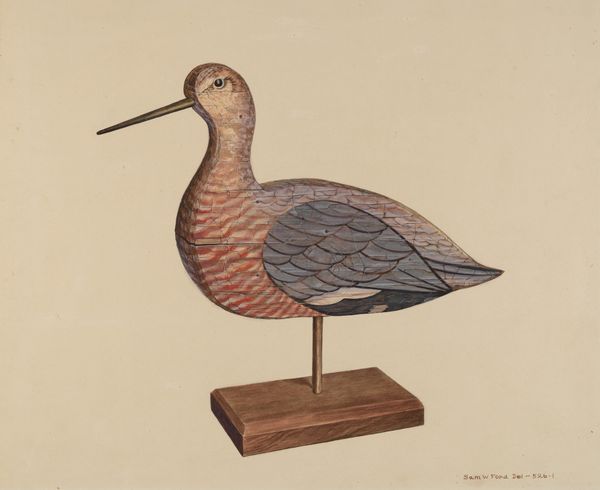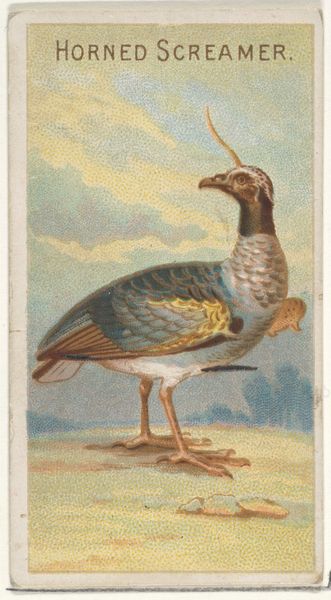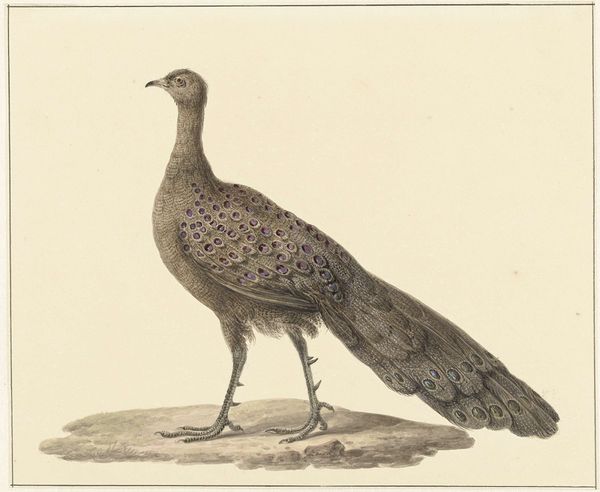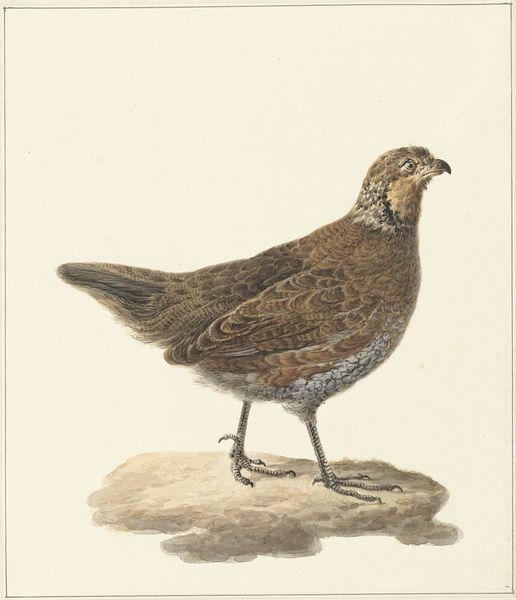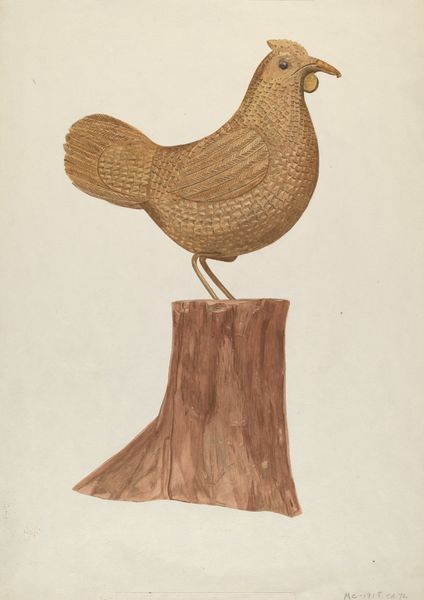
painting, watercolor
#
portrait
#
painting
#
watercolor
#
animal portrait
#
watercolour illustration
#
academic-art
#
botanical art
#
realism
Dimensions: 14 3/4 x 11 3/8 in. (37.47 x 28.89 cm) (outer frame)
Copyright: Public Domain
Editor: This watercolor painting, "A Black Partridge," made around 1800 by an artist from the Company School, is strikingly lifelike. It's got such a focused, almost serious air about it. What do you see in this piece? Curator: Beyond the immediate, almost scientific rendering of the bird, I see layers of cultural encoding. Consider the Partridge itself. Across cultures, birds can represent everything from freedom and the soul to omens, messages from other worlds. Knowing this comes from the Company School, can we decode what the Black Partridge signified, within, say, Indian or British colonial frameworks? Editor: That's interesting! I was only thinking about the detail in the feathers. I hadn't considered how the bird itself might have symbolic meaning in different cultures. Do you think the artist intended it to have a specific meaning? Curator: Perhaps. These Company School paintings, produced for the British, often depicted the 'exotic' flora and fauna of India with meticulous detail. This almost scientific accuracy catered to Western sensibilities and their quest for knowledge and control over the natural world. The image becomes a symbolic conquest. Editor: So, the painting is not just about the bird, but about the relationship between the colonizers and the colonized? Curator: Precisely! The act of depiction becomes an act of claiming, of understanding, perhaps even a subtle act of subjugation. It invites us to consider who is doing the seeing and what power dynamics are at play. Does the Black Partridge itself have another symbolic significance? What does it look like to you? Editor: Now that you mention it, the dark colours almost make it look vulnerable, in contrast to what I originally said. I am fascinated about all of this imagery and what it signifies! I will not be able to look at artworks the same again. Thank you. Curator: That's the beauty of iconography, it allows us to continually unpack the layers of meaning embedded in seemingly simple images, revealing complex histories and power dynamics.
Comments
minneapolisinstituteofart almost 2 years ago
⋮
“Company school” refers to a style of Indian painting that developed during the last quarter of the eighteenth century. With the decline of Mughal nobility at that time, Indian artists naturally turned to their British rulers for patronage. This attempt on the part of artists to work in a mixed Indo-European style that would appeal to resident Europeans employed by the various East India trade companies gave rise to the name “company school.” In this magnificent study of a black partridge, the artist has readily adapted to British ornithological conventions and a large format. The plumage of the bird, based on meticulous direct observation, is rendered with detailed accuracy and in naturalistic color in a style very different from classical Indian painting, with its flattened space, decorative coloration, and imagined compositions. In addition to natural-history subject matter, resident Europeans also collected architectural and botanical studies.
Join the conversation
Join millions of artists and users on Artera today and experience the ultimate creative platform.
